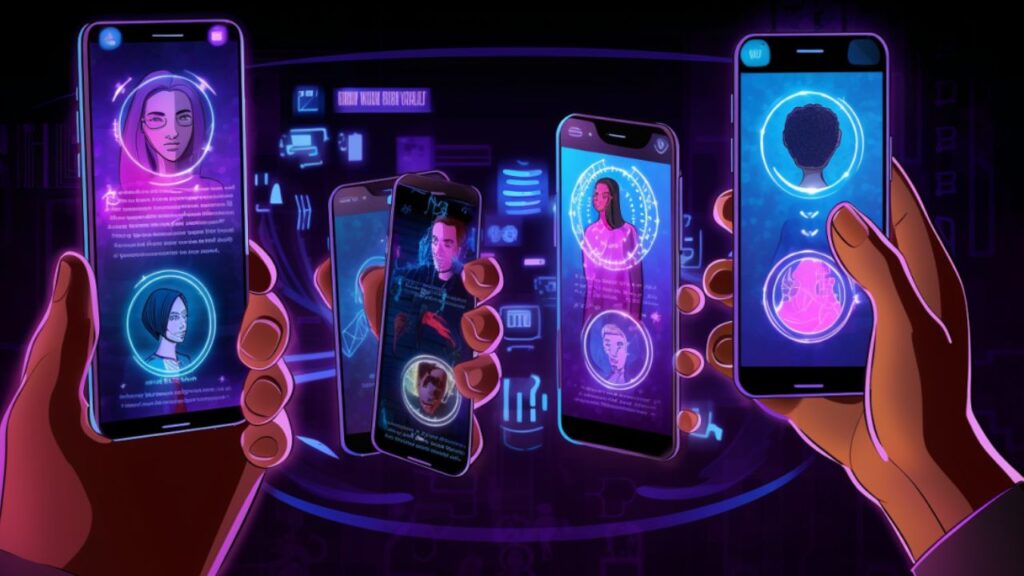
In an era where our digital and physical lives are intertwined, online dating platforms have carved a significant niche in how we meet and interact with potential partners. Yet, as these platforms proliferate, so too do concerns about user authenticity and security. Enter the innovative realm of biometrics, which proposes to enhance the user experience while bolstering security and privacy. By authenticating users through unique physical or behavioral traits, online dating may never be the same.
Online dating apps are often plagued with fraudulent profiles, catfishers, and users with nefarious intentions. User verification is therefore critical to maintaining the integrity of these platforms, ensuring users’ safety, and preventing potential misuse. Biometric technologies, including facial recognition and fingerprint scanning, promise to radically advance user verification processes, reducing the possibility of impersonation and enhancing overall user trust.

Biometrics is fundamentally changing the landscape of cybersecurity. By harnessing the power of unique physiological and behavioral characteristics to verify identities, biometrics provides a more secure, seamless, and personalized user experience. In the context of online dating, these technologies could revolutionize how platforms validate users, potentially making ‘catfishing’ a thing of the past.
Biometrics refers to the science of identifying and verifying individuals based on their unique biological or behavioral characteristics. This can range from physiological characteristics like facial features, fingerprints, iris patterns, or DNA, to behavioral traits such as voice patterns, typing rhythm, or gait.

Different biometric technologies cater to different identity verification needs. Physiological biometrics primarily rely on fixed biological characteristics like fingerprints, face geometry, and iris patterns. In contrast, behavioral biometrics capture unique patterns in human activity, like voice recognition, keystroke dynamics, or navigation patterns.
Biometric systems capture unique patterns or traits through a sensor, process the data into a digital format, and store this in a database. When verification is required, the system compares the newly captured data with the stored version. If there’s a match, the identity is confirmed. Thanks to machine learning algorithms and advanced sensors, these systems are becoming increasingly accurate and adaptable.
Biometric technologies represent a significant upgrade from traditional password systems, which are susceptible to breaches, phishing, and human forgetfulness. By tying access to a user’s unique physical or behavioral characteristics, biometric systems can provide a far more secure and user-friendly experience. In the realm of dating apps, this could deter malicious users from creating multiple fake accounts, fostering a safer and more authentic environment.

However, biometric technologies also present considerable privacy concerns. If biometric data falls into the wrong hands, it could potentially be used for identity theft, stalking, or even blackmail. Unlike a password, you can’t change your fingerprints or facial features. Thus, ensuring the secure storage and handling of such sensitive data is paramount.
Implementing biometric systems in dating apps also presents technical challenges. These range from ensuring the accuracy of remote biometric data capture to dealing with variable lighting conditions for facial recognition and coping with the vast diversity of human physiological and behavioral traits.
As with many technological advancements, biometrics introduces a delicate balance between safety and personal liberty. While it offers an effective way to boost the security of dating platforms, it also creates potential for misuse or abuse of personal data. Therefore, transparency about how these technologies are used and what data is collected is essential.

Regulations such as the European Union’s General Data Protection Regulation (GDPR) have implications for biometric data use. Depending on the jurisdiction, dating apps may need to adapt their biometric procedures to ensure they’re compliant with relevant laws, further complicating the adoption of these technologies.
Ethical considerations can be mitigated by adopting robust data protection measures, maintaining transparency about data use, and allowing users to opt in or out of biometric features. A user-centric approach can ensure that the benefits of enhanced security do not come at the cost of user comfort and trust.
As futuristic as it may sound, the use of biometrics in dating apps is not far off. Already, several platforms are testing and implementing these technologies.

Badoo, a popular international dating app, has introduced facial recognition technology to match users with people who look like their celebrity crushes. While the primary intention is to enhance user engagement, the technology also assists in verifying user identity.
Tinder recently partnered with the personal safety app Noonlight to allow U.S. users to share details about upcoming dates, including who they are meeting, where, and when. It also includes a panic button that alerts law enforcement to potentially dangerous situations. This, coupled with biometrics, could significantly enhance user safety.
Biometrics presents an intriguing solution to the challenges of user verification in online dating. But as with all advancements, it also raises questions about privacy, consent, and the responsible use of technology. The question is, are we ready for this leap into the future of online dating? And more importantly, are we willing to accept the trade-offs? I’d love to hear your thoughts in the comments below.
Born in the grit and grind of Detroit, Daniel Firewall's journey has been anything but easy. From an early age, he displayed a knack for understanding systems and breaking codes. His keen analytical mind and relentless pursuit of knowledge led him to become a respected figure in the field of cybersecurity.
Daniel believes in maintaining a balance between the heart and the mind, especially when it comes to online dating. He is fiercely protective of his readers, ensuring they are well-armed with the knowledge and tools they need to navigate the treacherous waters of online dating securely. His mission is simple: ensure everyone can search for love without fearing for their safety.